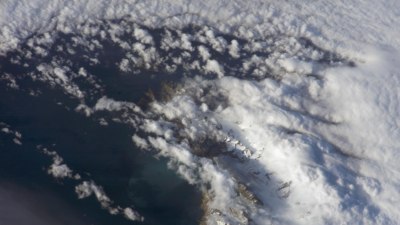What Causes a Rare Ice Blink
Discover the intriguing phenomenon of ice blink and the scientific principles behind it.

Image by boyarkinamarina on Freepik
Ice blink is a mesmerizing optical phenomenon that occurs in polar regions, where a bright, white light appears in the sky above the ice. This phenomenon can often be mistaken for the sun's reflection or other weather-related occurrences. However, the science behind ice blink is quite fascinating and is rooted in the unique optical properties of ice, as well as the atmospheric conditions typical of these frigid environments. In this article, we will explore what causes ice blink, its scientific basis, and why it is particularly noticeable in certain locations.
Understanding Ice Blink
Ice blink is predominantly observed in polar and subpolar regions, associated with vast expanses of sea ice. The phenomenon occurs when sunlight reflects off the surface of the ice and scatters into the atmosphere, creating an appearance of brightness even when the sun is not directly visible. This bright appearance can illuminate the sky with a bluish or white hue, giving the impression that there is ice present nearby, often over the horizon where it is not visually detectable.
The Role of Ice Properties
The unique properties of ice play a crucial role in the formation of ice blink. Ice has high reflectivity, particularly in its solid form, which enables it to reflect sunlight efficiently. This characteristic is especially pronounced on the smooth surfaces of thick ice floes, which can reflect and refract sunlight, while irregular and broken ice may scatter light in varied directions. The angle of sunlight incidence, as well as the cleanliness and smoothness of ice surfaces, can significantly influence the intensity and visibility of the ice blink effect.
Atmospheric Conditions
Atmospheric conditions are another critical factor in the emergence of ice blink. The presence of clouds, moisture, and temperature inversions can all influence how light interacts with the atmosphere over icy landscapes. Humidity levels affect the scattering of light, while temperature inversions can trap warmer air above colder air, further impacting visibility. Clear skies and low humidity are ideal for observing ice blink, as they reduce atmospheric interference and enhance the brightness that reflects off the ice.
Geographic Distribution
Ice blink is most commonly seen in the Arctic and Antarctic regions, where sea ice covers vast areas. Specific geographic locations, such as the northern coasts of Canada, Greenland, and areas around Antarctica, are more prone to this phenomenon due to their consistent ice coverage and favorable atmospheric conditions. In these regions, ice blink can be observed throughout the year, although the intensity and frequency may vary depending on the season and the prevailing weather conditions.
Scientific Observations
Researchers have studied ice blink to understand better its implications for weather prediction and climate monitoring. Ice blink can serve as a visual cue for the presence of ice, assisting meteorologists in assessing sea ice conditions. By observing the extent and intensity of ice blink, scientists can gather valuable data to track changes in ice coverage, study climate patterns, and predict future environmental changes in polar regions.
Importance of Ice Blink in Polar Navigation
For those navigating in polar regions, ice blink can be a crucial indicator of nearby ice fields. Sailors and explorers in the Arctic often rely on the phenomenon to gauge the location of the ice even when it is out of sight. Knowing where ice is present can significantly influence navigation routes and strategies, helping to improve safety and foster efficient travel through hazardous icy waters.
Natural Habitat Indicators
Ice blink can also indicate the health of marine ecosystems, as changes in ice cover and thickness may affect local wildlife. The presence of sea ice is vital for various species, including polar bears, seals, and seabirds, which depend on ice for hunting, breeding, or protection from predators. By monitoring ice blink, researchers can gain insights into the state of these ecosystems and the impact of climate change on marine biodiversity.
Local Folklores and Cultural Significance
In many indigenous cultures in polar regions, ice blink is part of local folklore and carries cultural significance. Various legends and stories have emerged, explaining the origins and meanings of this phenomenon. These narratives often highlight the relationship between local communities and their environment, underscoring the importance of natural phenomena like ice blink in cultural traditions and practices.
Changes Due to Climate Impact
As global climate change continues to affect polar regions, the dynamics of ice blink may also change. Reductions in sea ice extent, increases in temperature, and shifts in atmospheric conditions could alter the frequency and intensity of ice blink events. Researchers are closely monitoring these changes, as they could have broader implications for the understanding of climate resilience and the adaptability of polar environments to ongoing climatic shifts.
Ice blink is a remarkable and captivating phenomenon that highlights the intricate relationship between sunlight, ice, and atmospheric conditions in polar regions. This optical display not only brings beauty to the icy landscapes but also serves as an essential indicator for navigation, ecology, and climate studies. By understanding what causes ice blink, we can appreciate the complexities of our planet's climate systems and the importance of preserving these unique environments in the face of climate change. As we continue to explore and study this phenomenon, it remains a reminder of the natural wonders that exist in some of the world's most remote and extreme locations.











